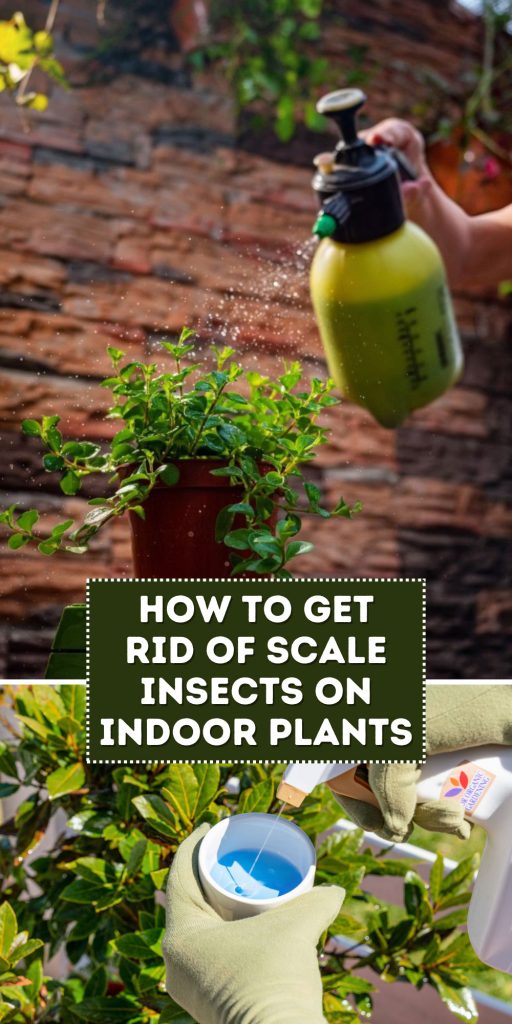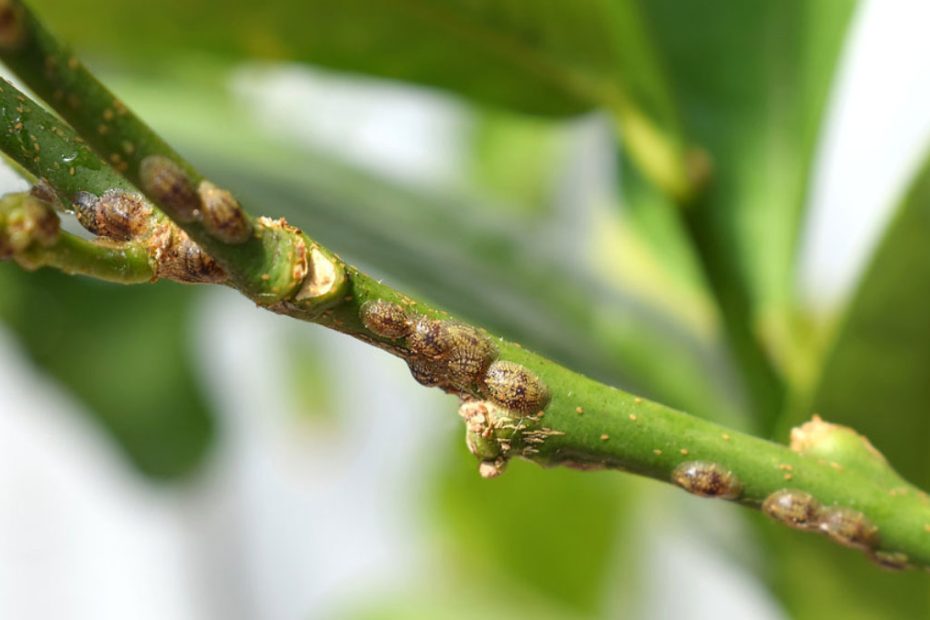You’ve nurtured your indoor plants with care, but suddenly, they’re looking a bit under the weather. Tiny, stubborn pests known as scale insects might be the culprits. These pesky invaders latch onto your plants, sucking out vital nutrients and leaving behind a sticky residue that invites mold.
Don’t worry, though—getting rid of scale insects isn’t as daunting as it seems. With a few practical steps, you can reclaim your green space and ensure your plants thrive once more. Let’s jump into effective strategies to banish these pests and restore your indoor garden’s health.
Key Takeaways
- Identify Scale Insects Early: Timely detection of scale insects through regular inspections can prevent significant damage to indoor plants. Look for sticky residues, yellowing leaves, and visible insects on stems and leaves.
- Preventive Measures: Implement proactive strategies like maintaining moderate humidity, ensuring proper air circulation, and providing adequate light and space. Regularly inspect and promptly isolate affected plants to prevent the spread of scale insects.
- Natural Remedies: Utilize manual removal techniques and homemade sprays like soap solutions, neem oil, and alcohol mixtures to control scale insect infestations effectively without harsh chemicals.
- Chemical Treatments: When necessary, apply systemic or contact insecticides and growth regulators carefully, following safety guidelines to avoid harming plants. Ensure even application and proper ventilation.
- Long-term Maintenance: Promote plant health through consistent watering, proper fertilization, suitable light levels, and regular cleaning to prevent reinfestation. Quarantine new plants and introduce natural predators to support a pest-free environment.

Understanding Scale Insects
Scale insects are small pests that feed on the sap of plants, causing significant damage. Recognizing and managing these insects is crucial for maintaining the health of your indoor plants.
What Are Scale Insects?
Scale insects are part of the superfamily Coccoidea. These pests:
- Aphids: Soft-bodied insects that secrete a honeydew substance.
- Mealybugs: Oval-shaped, covered with a waxy, white substance.
- Pit Scales: Tiny, forming pits on plant surfaces where they live.
- Armored Scales: Hard-bodied, protecting themselves with a tough outer covering.
They attach themselves to stems, leaves, or branches, sucking out plant fluids. In large numbers, they can weaken or even kill plants. Immature scales, called “crawlers,” move around to find feeding spots.
Common Signs of Infestation
Identifying scale insect infestations early can prevent extensive damage. Look for these signs:
- Sticky Residue: Honeydew secretion leads to a sticky film on leaves and nearby surfaces.
- Yellowing Leaves: Loss of chlorophyll causes leaves to yellow.
- Stunted Growth: New leaves may refuse to open or appear misshapen.
- Presence of Sooty Mold: Black fungus growing on honeydew-covered surfaces.
- Visible Insects: Look closely for small, shell-like bumps on leaves and stems.
Regular inspections help catch scale infestations early, ensuring prompt action to protect your indoor plants.
Maintain consistent vigilance and follow best practices to manage and eradicate scale insects effectively.
Prevention Techniques
Reducing the risk of scale insect infestations on indoor plants involves proactive measures. Implementing effective prevention techniques keeps your plants healthy and less susceptible to pests.
Regular Inspection and Monitoring
Conduct regular inspections to catch infestations early.
- Frequency: Check plants at least once a week.
- Hotspots: Inspect leaf undersides, stems, and along leaf veins.
- Signs: Look for sticky residue, discoloration, and visible insects.
Use a magnifying glass to spot early signs of scale insects, since they are often hard to see with the naked eye. Isolate affected plants promptly to prevent the spread to healthy ones.
Environmental Controls
Adjusting the environment can deter scale insects.
- Humidity: Maintain moderate humidity levels. Dry environments attract pests.
- Air Circulation: Ensure proper air circulation around your plants.
- Light: Provide appropriate light levels for each plant species.
Regularly wipe down leaves with a damp cloth to remove dust, which can harbor pests. Avoid overcrowding plants to ensure each has adequate space and airflow. These steps create an environment less conducive to scale insect infestations.
Natural Remedies
Address scale insects on your indoor plants with natural remedies to avoid harsh chemicals.
Manual Removal Methods
Manual removal offers an immediate and cost-effective way to control scale insect infestations.
- Inspect Plants: Regularly examine leaves and stems, especially the undersides, for scale insects. Use a magnifying glass if needed.
- Use a Soft Brush: Gently scrub off visible insects with a soft brush or cloth. Dip the brush in mild soapy water for better effectiveness.
- Prune Infested Areas: Remove and dispose of heavily infested branches or leaves. This prevents the spread of the pests.
Homemade Sprays and Solutions
Homemade sprays provide a safe and effective option to manage scale insects.
- Soap Solution: Mix 1 tablespoon of mild liquid soap with 1 quart of water. Spray affected areas, ensuring thorough coverage. Repeat weekly.
- Neem Oil Spray: Combine 2 tablespoons of neem oil with 1 gallon of water. Use this solution to spray your plants, as neem oil disrupts the insect’s life cycle.
- Alcohol Solution: Create a 1:1 solution of rubbing alcohol and water. Dab this mixture onto scale insects using a cotton swab.
Homemade sprays require consistency and proper application to be effective. Always test a small area of the plant before full application.
Chemical Treatments
Chemical treatments are a reliable way to eradicate scale insects from indoor plants when natural remedies fall short. These treatments use specific insecticides that target scale insects without causing significant harm to plants.
Types of Insecticides
Choosing the right insecticide is crucial for effective treatment. Here are some common types used against scale insects:
- Systemic Insecticides: Absorbed by the plant, these insecticides kill pests that feed on treated plants. Examples include imidacloprid and dinotefuran.
- Contact Insecticides: Kill insects upon direct contact. Examples include insecticidal soap and horticultural oil.
- Growth Regulators: Disrupt the growth and development of scale insects. Examples include pyriproxyfen and buprofezin.
Safe Application Practices
Proper application ensures effectiveness and minimizes risks. Follow these steps for safe use:
- Read Labels: Check instructions and safety warnings before use.
- Test First: Apply on a small, inconspicuous plant area to avoid potential damage.
- Protect Yourself: Wear gloves, masks, and protective eyewear.
- Apply Evenly: Use sprayers for thorough and even coverage.
- Ventilate Area: Ensure good airflow to reduce exposure to vapors.
Chemical treatments can be a powerful ally in your fight against scale insects if used responsibly. Always prioritize safety and follow proper guidelines.
Long-term Maintenance
Keeping your indoor plants free of scale insects involves both proactive and ongoing strategies. By maintaining plant health and integrating preventive measures, you can ensure a long-term solution against these pesky pests.
Improving Plant Health
Healthy plants are less susceptible to scale insect infestations. Ensure your plants thrive by following these key practices:
Nutrient Management
- Fertilization: Use a balanced fertilizer during the growing season. Make sure it matches your plant species’ specific requirements.
- Soil health: Regularly check soil quality. Add organic matter if necessary to enhance nutrient availability.
Watering Practices
- Consistency: Water plants consistently but avoid overwatering. Soggy soil can stress plants, making them more vulnerable.
- Techniques: Water the soil directly, keeping leaves dry to prevent fungal diseases, which can attract pests.
Proper Lighting
- Light levels: Match light levels to your plant’s needs. Some require bright, indirect light, while others thrive in low light.
- Natural vs. Artificial: Use grow lights if natural light is inadequate. Monitor and adjust based on your plant’s growth and health.
Integrating Preventive Measures
Incorporating preventive measures minimizes the chances of scale insect infestations. Regular monitoring and maintenance are key to a pest-free environment.
Regular Inspections
- Conduct weekly inspections, focusing on hotspots like leaf undersides and stems. Use a magnifying glass to detect early signs of infestation.
Environmental Control
- Humidity and Air Circulation: Maintain moderate humidity and ensure proper air circulation. Avoid clustering plants, which can create humid microenvironments conducive to pests.
- Cleaning: Wipe down leaves regularly to remove dust and potential pest habitats.
Quarantine New Plants
- Isolate new plants for at least two weeks. This practice prevents introducing pests to your existing collection.
Natural Predators
- Encourage beneficial insects like ladybugs that target scale insects. While more suited for outdoor plants, they can still offer some indoor help.
- Continue using homemade solutions like soap sprays or neem oil regularly. Test these solutions on small areas first to ensure safety.
By maintaining plant health and integrating preventive measures, you can effectively manage and eventually prevent scale insect infestations, ensuring your indoor plants remain vibrant and pest-free.
Conclusion
By understanding the nature of scale insects and implementing proactive measures, you can maintain the health and beauty of your indoor plants. Regular inspections and environmental controls are key to early detection and prevention. Use natural remedies and safe chemical treatments as needed to manage infestations effectively. Remember to maintain proper plant care practices to create an environment less conducive to pests. With consistent effort, your indoor garden can thrive free from the damage caused by scale insects.
Frequently Asked Questions
What are scale insects, and how do they affect indoor plants?
Scale insects are small pests from the superfamily Coccoidea that feed on plant sap. They cause significant damage by sucking out essential nutrients, leading to yellowing leaves, stunted growth, and a sticky residue.
What are common signs of a scale insect infestation?
Common signs include sticky residue on plants, yellowing leaves, stunted growth, the presence of sooty mold, and visible insects on the plant surfaces.
How often should I inspect my indoor plants for scale insects?
It is recommended to inspect your indoor plants at least once a week to catch infestations early.
What are some environmental controls to prevent scale insect infestations?
Maintain moderate humidity, ensure proper air circulation, and provide appropriate light levels for each plant species. Regularly wipe down leaves and avoid overcrowding plants.
Are there natural remedies to eliminate scale insects?
Yes, natural remedies include manual removal, soap solutions, neem oil sprays, and alcohol solutions. Always test these on a small area of the plant first to ensure safety.
When should I resort to chemical treatments for scale insects?
Chemical treatments should be considered if natural remedies are ineffective. Always follow safe application practices when using insecticides.
How can I improve plant health to prevent scale insect infestations?
Managing nutrients, ensuring proper watering, and providing appropriate lighting can make plants less susceptible to infestations. Regular maintenance and vigilance are key.
What is the importance of quarantining new plants?
Quarantining new plants helps prevent introducing pests to your indoor garden. It allows time to detect and treat any infestations before integrating new plants.
Can encouraging natural predators help with scale insect control?
Yes, introducing natural predators like ladybugs can be effective in managing scale insect populations and preventing infestations.
Should I continue using homemade solutions even after eliminating scale insects?
Yes, continuing to use homemade solutions can act as a preventive measure to keep scale insects at bay and ensure your indoor plants remain healthy and pest-free.
